Surprising Stories: Rodin’s The Burghers of Calais: Resistance and Sacrifice
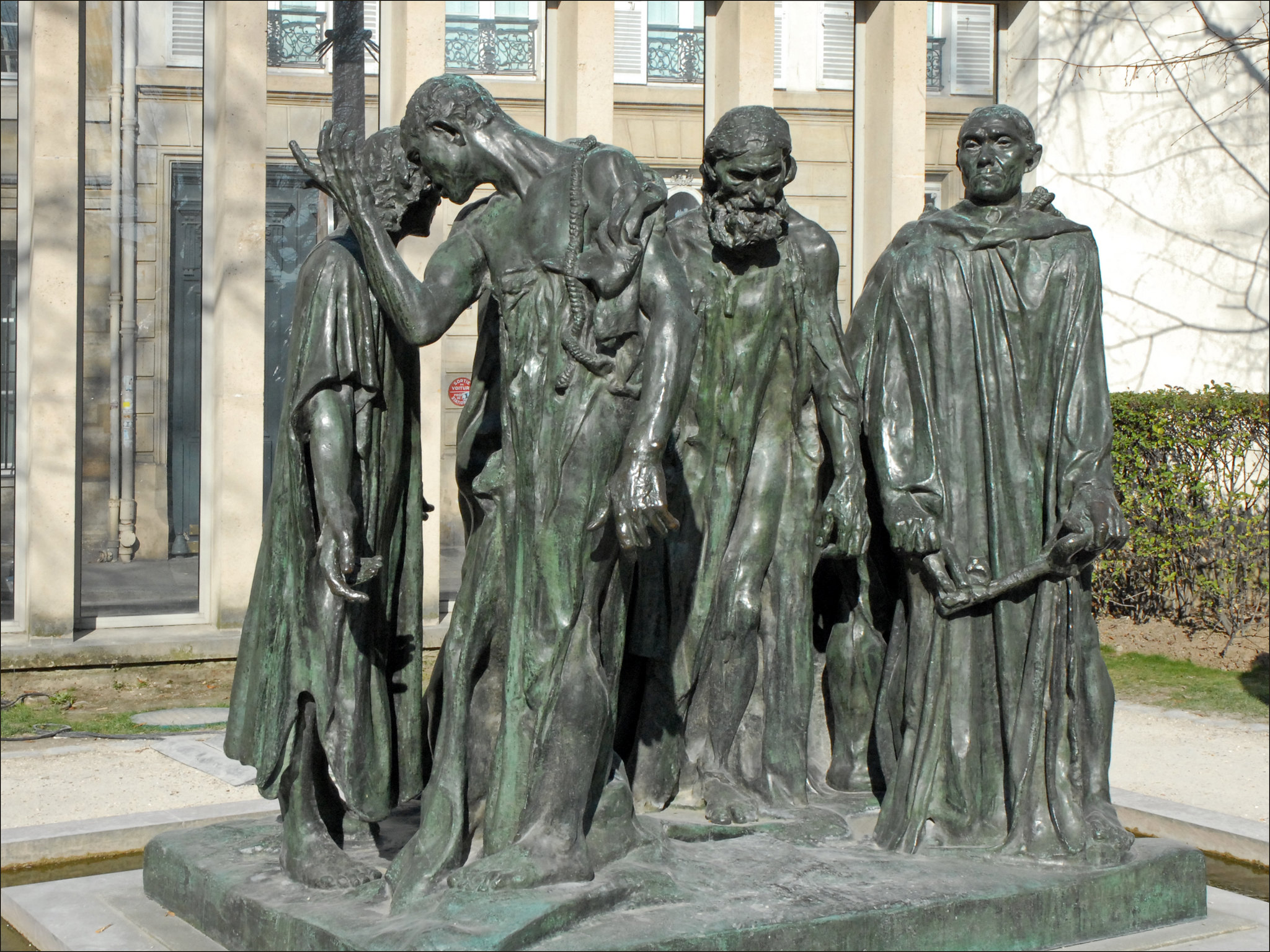
The Burghers of Calais by Auguste Rodin at the Rodin Museum. Jean-Pierre Dalbéra / Flickr
Today, perhaps more than any other time in recent history, we are aware of the fragility of the human body. The ongoing Covid pandemic and the worldwide protests against police brutality, makes it clear that how we view our bodies is changing how we view the world. This week’s Surprising Story looks at Auguste Rodin’s sculpture of the Burghers of Calais from 1895, one of his most inspiring monumental works of public sculpture that epitomizes how artists cast the human form to inspire social change.
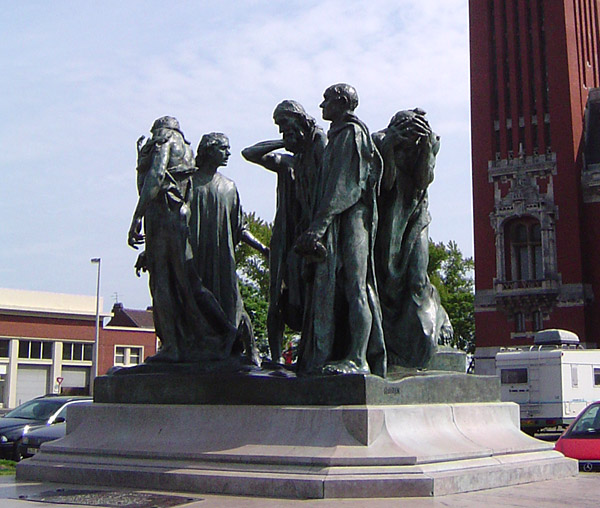
The Burghers of Calais by Auguste Rodin in Calais. Photo: ChrisO / CC
Auguste Rodin’s career spanned the late nineteenth and early twentieth centuries, where he created exceptional works of clay, wax, plaster, bronze, and marble. Born in 1840, although he did not attend the renowned École des Beaux-Arts (School of Fine Arts) in Paris, he learned the craft of sculpture through years of employment in the studios of other artists. His intense study of the human figure infused his sculptures with powerful sensuality, naturalism and a captivating physical presence.
In 1884, the Municipal Council of Calais voted to honor one of their local heroes in a public monument. In 1346, during the Hundred Years’ War, King Edward III proposed ending the English siege of Calais in exchange for the lives of six prosperous burghers. Edward demanded that the burghers walk out wearing nooses around their necks, and carrying the keys to the city and castle. The burghers, led by Eustache de Saint-Pierre, expected to be executed, but their lives were spared by the intervention of the English queen.
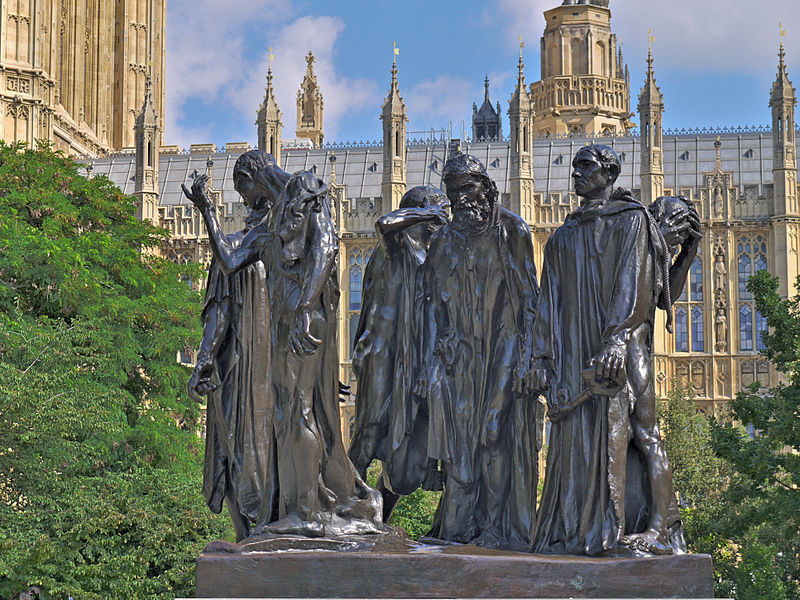
The Burghers of Calais statue by Auguste Rodin in Victoria Tower Gardens, Westminster, London. Photo: Patche99z / CC
The work was unveiled in Calais, in front of the Hôtel de Ville, in June 1895. However, one doesn’t have to go all the way to this northern French city to see it. Under French law a maximum of twelve original bronze casts of Rodin’s works may be made, and one of these is on display in the gardens of the Rodin Museum in Paris. Located within the Hotel de Biron, which had served as Rodin’s studio since 1908, the museum houses his personal collections bequeathed to the French State upon his death in 1917.
Although commissioned to depict only Eustache de St Pierre, Rodin decided to show all six, grouped one behind another in a ring, depicted as gaunt figures, with oversized hands and feet marching towards their tragic fate. Rodin worked on the commission for ten years, reorienting and rearranging the figures, focusing on the individual poses and gestures to reveal the character of each burgher. Rodin’s figures are individual masterworks, but as visitors walk around the group today, we can see how the artist invites us to imagine the meaning of self-sacrifice for greater public good.

Casts of The Burghers of Calais at the Rodin Museum in Paris. Photo: Pierre de Wissant / CC
Bronze was one of Rodin’s favorite mediums because it allowed the sculptor to make a very tactile work, where the deep lines of drapery, the turning of the hands, and the strain on the faces powerfully evoke human drama. The Rodin Museum also displays individual studies for this monumental work, notably in clay, allowing visitors to appreciate his creative process.
Rodin’s genius was his ability to radically challenge the placement of the figure in space, not only to one another, but also in his sculpture garden. Visiting today, we appreciate his contribution to modern sculpture: the ability to inspire change.
Learn more about Rodin’s life and art during our tours of The Rodin Museum and Gardens. Discover more on this tour, and our other experiences connecting art and gardens, at this link.

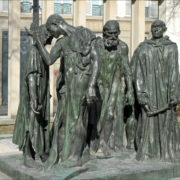


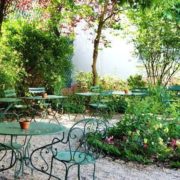


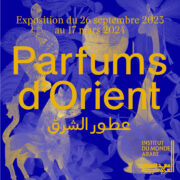


Leave a Reply
Want to join the discussion?Feel free to contribute!